WINE COLOURS
The colour is the most evident aspect of wine and evolves throughout its life, marking its various stages. The colour of wine depends on many factors, such as the grape varieties used, the winemaking process, aging, and maturation.
Not only the hue but also the intensity of the colour is important. It can be described as deep, rich, intense, or conversely, pale and weak. Generally, the greater the intensity, the richer the aromas and structure of the wine.
Finally, another crucial quality of colour is its vibrancy, which is closely linked to the wine’s acidity. From this perspective, a wine can be described as lively, fresh, and bright, or uncertain, faded, and dull.
The guide to different wine colors: tone, intensity, and vibrancy of wine.
White wines




Rosé wines



Red wines




